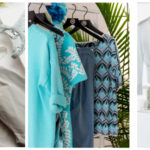Weddings are exciting events to look forward to! Getting the invitation is a moving experience as you anticipate the big day with loved ones and friends. And then, the invitation addresses attire in two words that don’t even go together: Beach formal. What’s that even mean?
Before we decide exactly what to wear to a wedding, we have to decide how dressy to get. That’s where it gets tricky. What’s the difference between white tie and black tie? Black tie optional? What about an invitation that is vague and doesn’t mention a dress code?
Don’t worry, I have answers.
I’ve created a quick guide on wedding attire and what to wear, in all scenarios.
Quickly though, some very general rules:
- Women wear dresses and men wear suits.
- Women don’t wear white, in any form. This rule is an old rule that falls within the social norm to not outshine a bride on her wedding day. Unless the dress code is specifically noted in the invitation, e.g., a “white wedding” or “black and white attire only”, stay away from white dresses.
- Time of day matters. Day weddings and night weddings mean different things in terms of how formal to get. Day weddings are automatically less formal than night weddings. So, an early afternoon ceremony followed by a brunch reception means lighter colors, cocktail dresses, sundresses, informal maxi dresses, and the like. Evening weddings that go on into the night mean more formal dresses, longer lengths, deeper colors, fancier accessories, etc.
White Tie
This is the most formal dress code for a wedding, and it’s typically not too common but it happens. Be sure to wear a formal, full-length gown in rich hues or black. Most white tie events happen in the evening, so night wedding rules apply. Feel free to go all out on your ultra-formal look: Updos, makeup, and statement jewelry.
Black Tie
Black tie is more common and these weddings are less formal than a white tie event but still require proper dressing up. Wear a floor-length gown or formal cocktail dress. Depending on the venue, a formal jumpsuit can be appropriate as well.
Black Tie Optional
The name may be confusing, but it simply means that this event is a bit more toned down than a typical black tie event. You have some wiggle room here on how fancy to get. The black tie dress code is a good jumping off point: Wear a floor-length or cocktail dress.
Cocktail Attire
Cocktail attire is fancy but more laid back than black tie. These weddings are festive events where you are free to dress less formally than the previously mentioned style rules. Cocktail dresses or skirts and blouses are appropriate.
Beach Formal
Beach formal is an upscale beach wedding where flip flops are never allowed. Maxi dresses, knee-length sundresses, and wedge sandals all fall within the beach formal dress code. Remember that wedges and espadrilles are your best friend, as heels and sand never work. Makeup and hair should be polished, yet much more relaxed, like beachy waves or a simple chignon.
Casual Attire
Casual attire is laid back wedding attire. There is still some dressing up to do, just much less formally. Wear sundresses, relaxed maxi dresses, or a skirt and blouse. Subtle accessories are fine.
What to do when the invitation is vague?
When the invitation doesn’t mention the dress code, there are a few clues to follow to gauge how to dress. First, how fancy is the invitation? The invite is a good clue as to the formality of the coming event. If the invitation is very formal, consider black tie or cocktail attire. A more casual invitation means less formal.
Second, with a bit of investigation about the venue, you can also gauge how dressy to get. Where will the wedding be held? Use the venue space as an indicator.
Need extra assistance during wedding season?
Formal dress codes often mean getting help from a personal stylist. New gowns and cocktail dresses definitely require tailoring to look and feel your best at the event. I can guide you through wedding season! If you need anything, consider reaching out. That’s what I’m here for
XOXO, Melrose.

